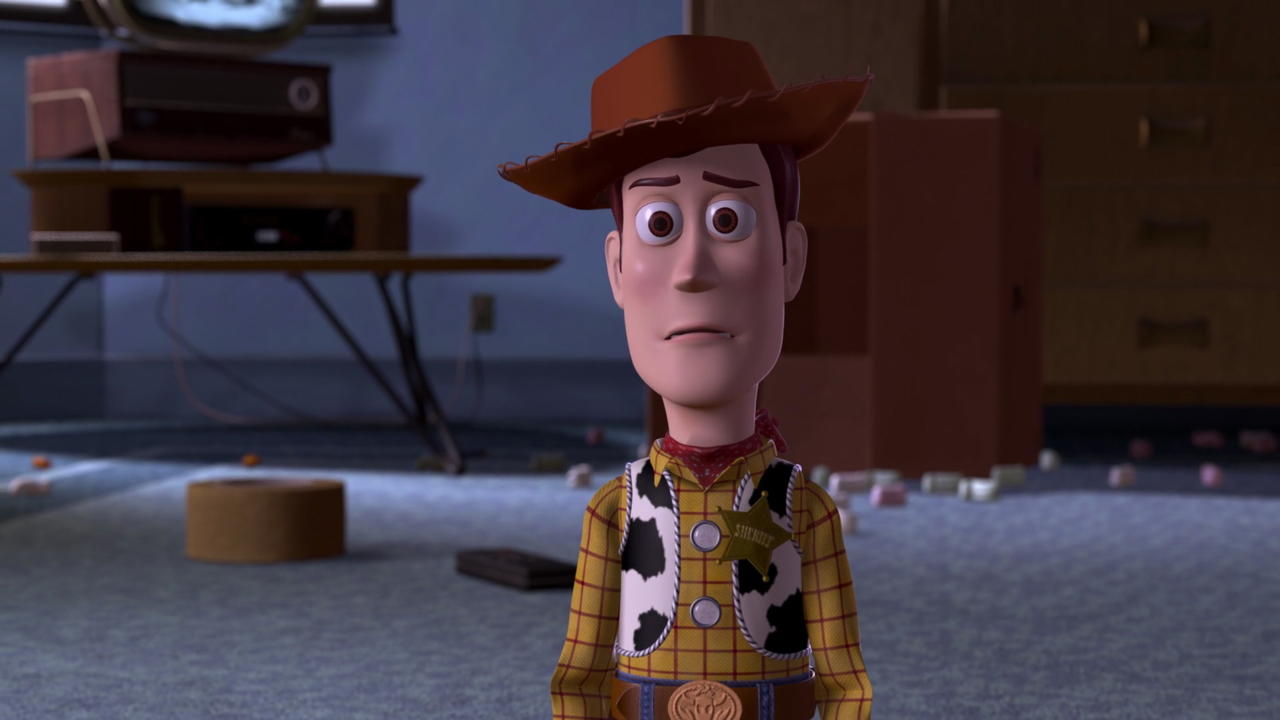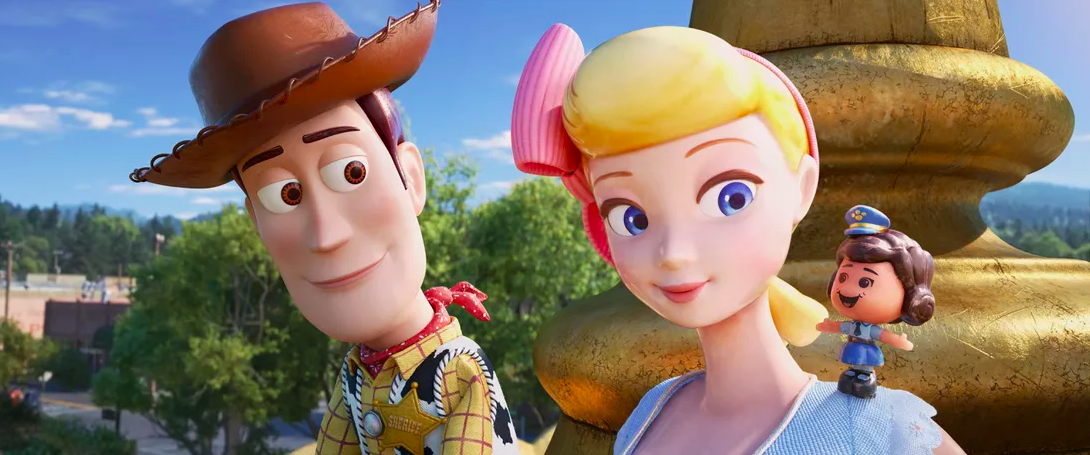Pixar's latest animated feature, Toy Story 4, is sitting high at a 98% rating on Rotten Tomatoes and received a score of 84 on Metacritic. Because of these high ratings, one could easily say it is universally acclaimed. On the box office front, the film pulled in $118 million in its opening weekend, which was a record for the franchise. This are looking great for the latest adventures of these well-loved characters. However, something about Toy Story 4 feels hollow. While trying to put a bow on things in this latest outing, Pixar simplified the story to its detriment.
To explain what is wrong with Toy Story 4, and why it retroactively mars the prior three films in the franchise, we must first establish a good-faith premise: that these films aspire to be more than "just kid films." If these were "just kid films," they would not have endured, across generations, for close to 25 years. They would not elicit uncontrollable weeping from adults.
Beneath the main conceit of toys coming to life, the first three movies wrestled with deeper, more existential questions. Woody, Buzz, and company were toys, first and foremost, designed and conceived from the outset to be played with and loved by children. This is the reason why they freeze or go limp when humans are present; their toy nature overrides all other impulses, even that of self-preservation.
Toys universally desire to be owned and loved. It's why Sid's toys don't just hop over the fence and say, "Screw this." On some level, they have no choice but to love Sid despite his mistreatment, because they are his. Even when they break the rules at the end of the first movie, it's to correct Sid's treatment of them. There's no effort or plans to escape from the house. They only break the rules to help everybody, so that they can continue to live under Sid's care.
And when Woody convinces Buzz that he's better off as a toy than as a space ranger, he makes his meaning plain: Bringing a child joy is the peak of a toy's existence. Hs speech is framed in such a way that we accept it as a truth:
"Being a toy is a lot better than being a Space Ranger.. look, over in that house is a kid who thinks you are the greatest, and it's not because you're a Space Ranger, pal, it's because you're a toy! You are his toy!"
Then, Toy Story 2 went deeper. It asked some uncomfortable questions: What happens to these toys if their owners grow up and give them away, or if they never get sold in the first place? We get our answer in the form of two hard luck cases: Jessie is scarred by Emily's abandonment of her, and the Prospector turns resentful and duplicitous because he was never sold and never loved in the first place.
And what's more, Jessie and Prospector may have lived with this for decades (assuming they were made in the 1950s, when Woody's Round-Up was on TV), and they still desire to be loved. It's a dark but logical extension of what we learned in the first film: because toys were made to do this, they will always desire to do it. As Jessie says, just because the owners forget the toys, doesn't mean that the toys forget their owners.
This evolves into the central question that Woody must answer: does he want to become a museum toy, which means he'll be loved and adored by children through glass? Or does he want to go back to Andy? Will he be satisfied with a limited, distant love that lasts forever, or will he risk destruction and oblivion for the intense, genuine love that Andy offers, if only temporarily? Woody makes a decision:
"I can't stop Andy from growing up, but I wouldn't miss it for the world."

This is so brave--to risk everything for a chance at real, genuine love. And the parallels that can be made to ourselves are obvious: do we live timidly or do we live boldly? Do we open ourselves up for love, knowing we may get our hearts broken, or do we close ourselves off?
Toy Story 3 deals with the fallout of Woody's decision. Andy is now 17 years old, and Woody is resigned to a life in the attic. He reiterates that a toy's job is to be there for the child (even a grown child) when he or she needs him. He even suggests an optimistic possibility--that perhaps, one day, Andy will have children, and those children will play with Andy's old, forgotten toys.
Of course, it doesn't work out that way. The other toys get accidentally thrown to the curb. And notice what their reaction is afterward: They don't give up and abandon their purpose, they donate themselves to daycare so they can continue serving their instincts. Even Lotso, the villain of the third movie, has this urge to seek out children. When he's replaced by Daisy, he takes over Sunnyside Daycare to ensure that he'll always be played with. Every toy in the first three movies gravitated to the same end goal.
Even if the toy ends up alone, or in a dumpster, it's better to have loved and lost than never to have loved at all.
At the end of Toy Story 3, Andy gives his toys to Bonnie, a young kid who will love and play with them after Andy's gone to college. It's a happy ending--sort of. We all die, and eventually, we know these toys will get thrown out or burned in an incinerator. But not today. For now, they're staving off the inevitable. For now, they're loved again. And they must live every precious day to the fullest.
To recap: We've been told, in multiple ways, that toys' overriding desire is to bring children joy. If they are deprived of this, they will seek it out, even for decades, until they find it. Their love is unconditional; even when they're abandoned or broken, they still remember their owners.
And given the chance to experience this connection more superficially, either in a children's museum or at a daycare where relationships are temporary, a toy would be justified to decline it; it's a poor substitute for the genuine thing. Even if the toy ends up alone, or in a dumpster, it's better to have loved and lost than never to have loved at all. It's analogous to any loving relationship where one person gives more than he or she receives. It's unconditional, and despite the drawbacks, it's worth it.
Toy Story 4 throws all of this away.
When Toys Become People
It turns out that toys can overcome the desire to want an owner. When Bo Peep is given away, she sits on an antique shelf for years. And finally, she gets tired of waiting for an owner, and she sets out on her own. She builds a vehicle for herself and teams up with other abandoned "lost toys," and she finds personal satisfaction and fulfillment in her new, wandering life, helping other toys in need. At the end of the movie, Woody takes a page out of her book and decides to pursue his love interest; he stays with Bo Peep rather than going back to Bonnie.
Put aside that Woody has a closer companionship with Buzz than he ever did with Bo, and this ending still flies in the face of everything we've learned, so far, about a toy's nature. By allowing toys the option of walking away, Toy Story 4 undercuts the poignancy of the earlier films.
When Woody told Buzz that being a toy was better than being a space ranger? It turns out he was wrong. Buzz could have just walked away. Sid's toys could have done the same. They're just suffering from a massive case of Stockholm Syndrome; they probably could have even killed Sid if they wanted to.
In Toy Story 2, it turns out that Jessie and The Prospector's biggest problem was that they weren't self-actualized, and they lacked a go-getter's attitude; they could have found purpose in their lives by leaning on each other. In Toy Story 3, it turns out that the toys didn't need to give themselves away to Sunnyside. They could have gotten all the emotional fulfillment they needed by escaping into the woods and bonding with each other.

According to Toy Story 4, the difficult choices of the prior films, between real, temporary love and shallow but everlasting existence, were binary fallacies. There was an Option C the entire time: to basically cut the children out of the equation. Bo and her ragtag crew of lost toys still want to be played with, but the terms and conditions of the arrangement as established by the other movies have radically shifted. Here, lost toys do just fine helping other toys find kids, while themselves being played with only sporadically--and sometimes even broken, in Bo's case. "Some kids play rougher than others." (Dark stuff, right?)
The previously established no-win scenario--the difficult choice between love and security--is what made these films so resonant in the first place; they played on our deepest, primal fears of being alone, being in danger, and growing old. Woody no longer has to choose or risk anything; he can fall in love with another toy and find emotional fulfillment away from humans. He never has to risk the incinerator. The narrative tension is gone.
It's not that this is narratively impossible. After all, we were never explicitly told that toys couldn't escape their initial, functional purpose. But the prior films' implications strongly indicated that they were trapped. By allowing them to become little autonomous humans in plastic bodies, Pixar was able to give Woody an unearned and damaging happy ending. It came at the cost of the franchise's poignancy and central message. The limitation inherent to being a toy created the characters' central dilemma, and by eliminating that limitation, Pixar has decimated the narrative stakes.
Maybe, if there's a Toy Story 5 on the horizon, Woody will walk this decision back. He'll go back to Bonnie or another human, and he'll realize that he can't find true fulfillment with a fellow toy, because, after all, they're toys--not people. But if this is truly the final film, then the story ends in a simpler, safer, less complex place than it originally began. It's only a tale of toys that magically come to life, and it doesn't mean anything more than that, which is a shame.
Read next: Why Pixar Decided To Make Toy Story 4 After Toy Story 3's Perfect Ending